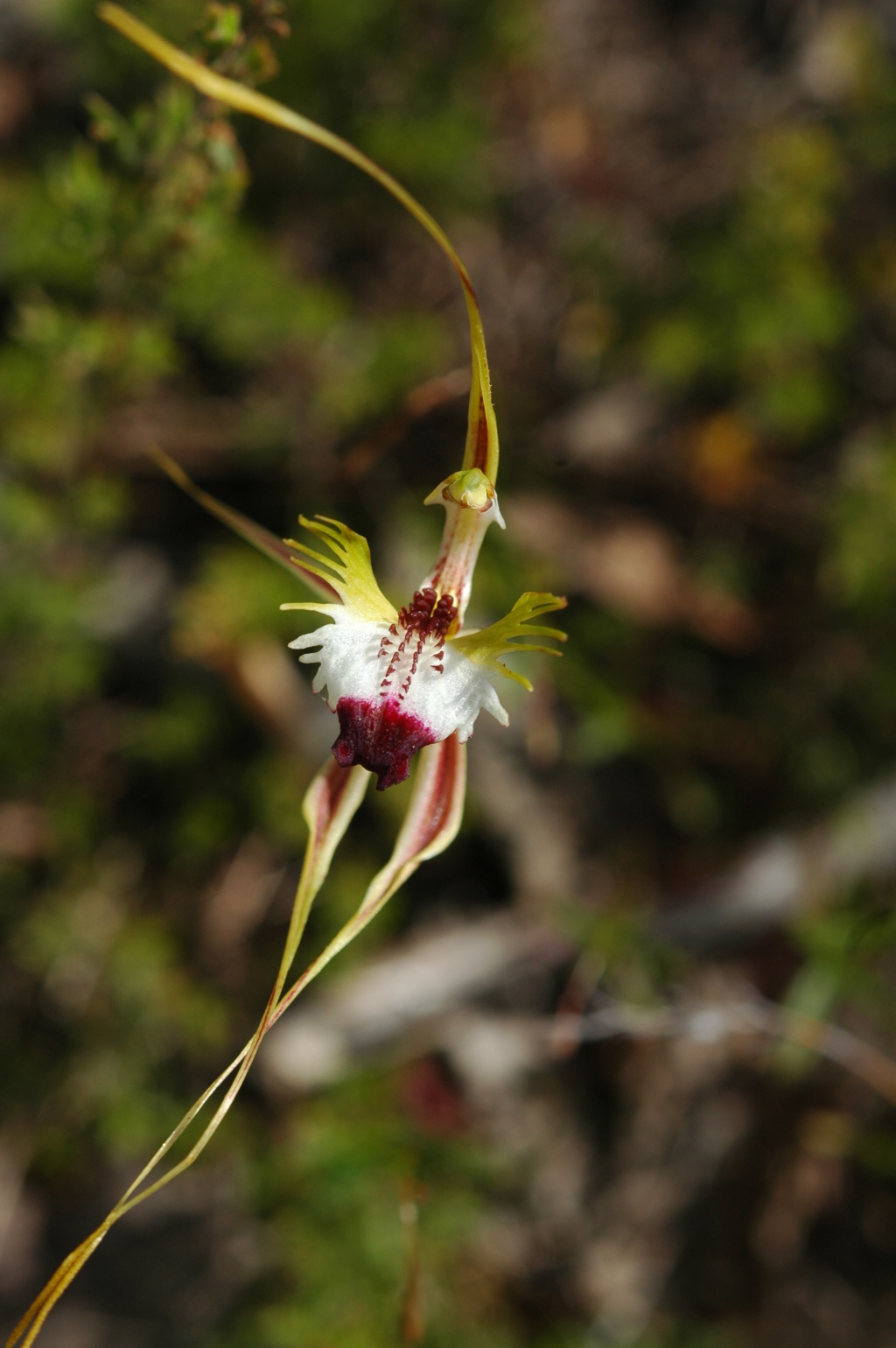Caladenia tentaculata
Schltdl. Large Green-combFlowering plant 13–50 cm tall. Leaf 8–15 cm long, 12–20 mm wide, often spotted red at base. Flowers 1–3; perianth segments 4–8 cm long, green with red central stripe; lateral sepals projected forwards, usually curved upwards then often drooping near the tips, often with an elbow-like bend near midway and curved upwards (often with drooping tips), asymmetric, dilated at base, 4–5 mm wide, tapered to a filiform, clubbed tail (club 7–12 mm long, with yellow to red-brown, separated, sessile glands); petals deflexed, linear-lanceolate with a long acuminate tip. Labellum very loosely hinged (floppy), curved forward with lateral lobes erect and tip of mid-lobe curved under, prominently 3-lobed, 16–20 mm long and 20–25 mm wide (when flattened), green at base with dark purple mid-lobe, separated by broad white band; larger comb-teeth 5–8 mm long, rising above anther tip, mid-lobe irregularly and broadly toothed or scalloped; lamina calli in 4 rows, crowded, extending onto base of mid-lobe, linear to narrowly club-shaped, to 2 mm long at base of labellum, shorter and with broader heads towards apex. Flowers Sep.–Dec.
LoM, Wim, GleP, VVP, VRiv, GipP, OtP, Gold, CVU, GGr, DunT, NIS, EGL, EGU, HSF, HNF, OtR, MonT, VAlp. Also SA. Widespread in Victoria favouring a range of habitats including coastal heathland, dry inland heathy or grassy woodland or open forest, on well-drained soils.
Exceptionally large individuals occurring within a population may be polyploids.
Hybrids between C. tentaculata and C. venusta often occur where the two species grow together.
Although their ranges overlap in coastal and central Victoria, C. tentaculata tends to be found further inland than C. parva and C. dilatata and favours drier habitats
Entwisle, T.J. (1994). Orchidaceae. In: Walsh, N.G.; Entwisle, T.J., Flora of Victoria Vol. 2, Ferns and Allied Plants, Conifers and Monocotyledons, pp. 740–901. Inkata Press, Melbourne.
 Spinning
Spinning


